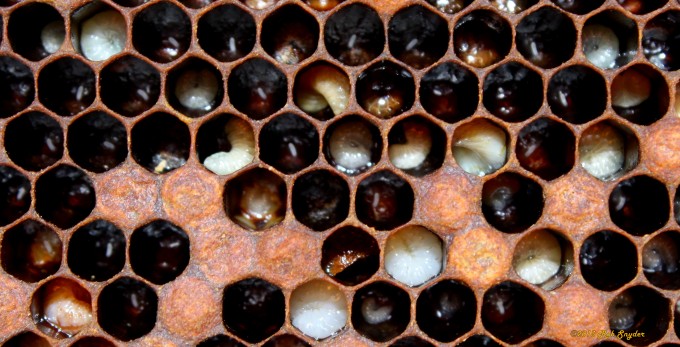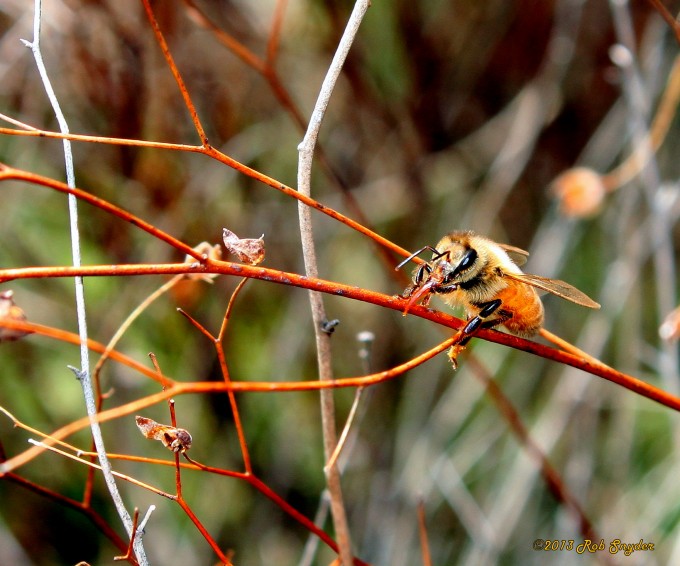
EFB is often found when nectar flows are sporadic or there is an insufficient number of nurse bees to attend brood. How does EFB spread? European Foulbrood (Melissococcus plutonius) is transmitted when the bacteria become mixed with the bee bread, nectar or diluted honey, and then fed to young larvae. The bacteria then replicate in the larvae mid-gut, killing the larvae within 4-5 days. This causes the larvae to die before sealed in most cases. When the larvae dies it is left in a “stomach-ache” position making it look contorted or twisted in the cell. If the larvae are fed a small amount of the bacteria it may die while sealed or have a decreased lifespan. At this point, EFB looks similar to AFB with scattered sunken cells with perforations. You may also see this if the larvae are fed copious amounts of food to prevent starvation. There are several secondary bacteria associated with EFB. This is often why the disease looks different in many cases depending on how severe the infection is. In hygienic colonies an EFB infection can be mistaken for a failing queen or spotty brood pattern because the bees are removing infected larvae and pupa at a fast rate. This bacterium, like AFB, is very contagious and all equipment should be cleaned once an infection has been found. This bacterium can stay contagious for years but does not produce spores like AFB.
Samples can be taken and sent to the USDA Honey Bee Lab for confirmation of this disease.
Symptoms:
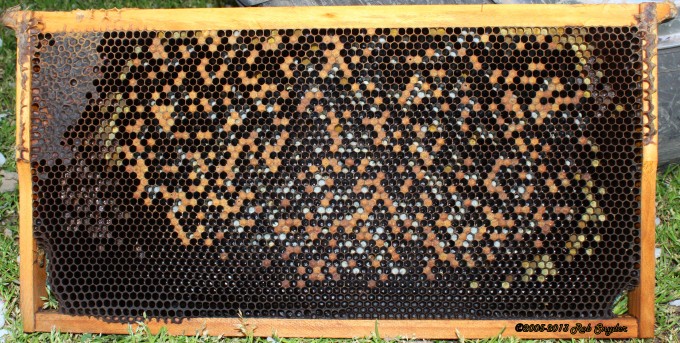
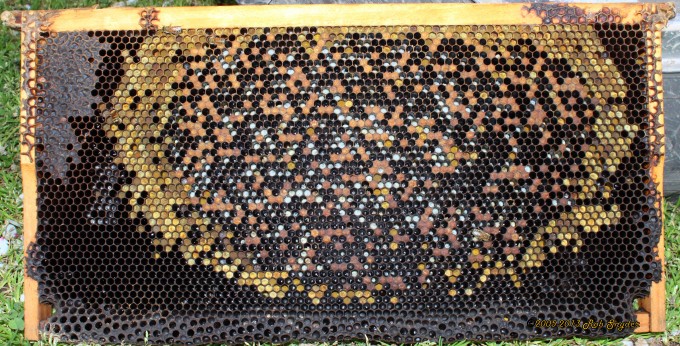
• Spotty brood pattern, whitish-yellow to brown larvae, curled upward or twisted.
• Deflated larvae in the bottom of the cell with a defined tracheal system (usually greyish to brown in color with white trachea.)
• Sometimes ropes stretching up to 1.5 cm.
• Odors produced can be sour or fish-like, or no odor at all (different odors can come from secondary bacteria.) Scale is usually from brown to black sunken to the bottom of the cell.
• Outside frames of the brood nest are usually infected first.
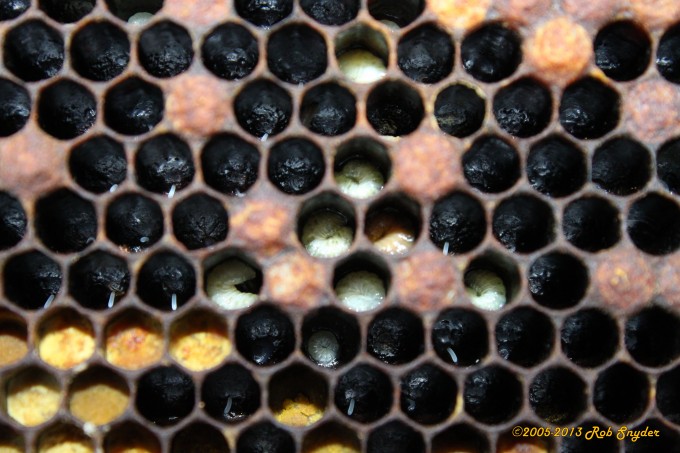
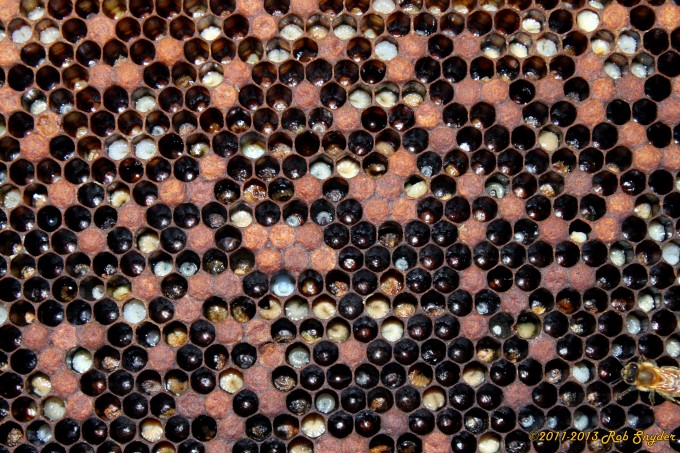
Treatments:
The only product labeled for control of EFB is Terramycin (Oxytetracycline hydrochloride). If the colony is infected it is important to treat 3 times with Terramycin 5 to 7 days apart. Re-queening may help by breaking the brood cycle. The shook swarm method and a good nectar flow will also clear up EFB.
For more information and images please visit my older posts HERE.
